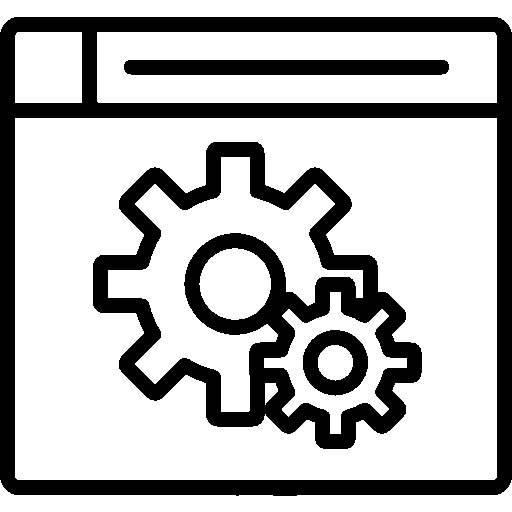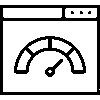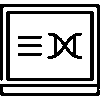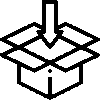- Products
- Platform
- Solutions
- Customers
- Support
- Pricing
 Website & Mobile & E-commerce
Website & Mobile & E-commerce
 CRM
CRM
 Operation & ERP
Operation & ERP
 Productivity
Productivity
 Support
Support
 Community
Community
 Learn
Learn
Application Support Point

Gather your worklists under the project title. Add people, enter deadlines for jobs.
- Version History
- Application Features
- User Manual
- FAQ
- Community
Project Management
Proje adı, müşteri bilgisi, proje kodu ve ilgili ürün gibi temel bilgileri girerek yeni bir proje oluşturabilirsiniz.
Projelerin ilerleyişini Beklemede, İşlemde, Tamamlandı, İptal Edildi gibi aşamalarla takip edebilirsiniz. Aşamalar, Ayarlar >> Aşama Tanımları sayfasından özelleştirilebilir.
Projeler için özel durumlar oluşturabilir, Ayarlar >> Durum Tanımları sayfasından mevcut durumları düzenleyebilirsiniz.
Projeleri Kapatma veya İptal Etme seçenekleriyle sonlandırabilir, kapanış kontrol listesini tamamlayarak süreci tamamlayabilirsiniz.
Projeye dahil olacak personeli ve müşteri temsilcilerini ekleyebilirsiniz. Üyeler, Proje Üyeleri sayfasından yönetilir.
Projelerin ilerleme durumunu Detaylı Durum Raporu ve Aşamalı Durum Raporu ile takip edebilirsiniz.
Projeler tamamlandığında, Geri Bildirim ve Öğrenilen Dersler sayfasını kullanarak değerlendirme yapabilir, proje süreçlerini geliştirebilirsiniz.
Projelerde oluşabilecek riskleri ve sorunları belirleyerek Risk ve Sorun Yönetimi sayfasından kayıt altına alabilirsiniz.
Budget Cost Management
Bütçe ve Maliyet sayfası üzerinden proje için planlanan bütçeyi belirleyebilir, gerçekleşen giderleri takip edebilirsiniz.
Personel ve proje bazlı masrafları takip edebilir, Masraflar sekmesinden detaylı analiz yapabilirsiniz.
Projeler kapsamında yapılan iş seyahatlerini ve faturalandırma süreçlerini Seyahatler ve Faturalar sayfalarından yönetebilirsiniz.
Ödemeleri vadeli veya peşin olarak planlayabilir, Ödeme Planı sekmesini kullanarak tahsilat süreçlerini takip edebilirsiniz.
Planning and Calendar Management
Projelerle ilişkili görevleri Liste, Takvim, Kanban, Öncelik Sıralaması gibi görünümlerle yönetebilirsiniz.
İş süreçlerini Kanban ve Gantt diagramları ile takip ederek iş akışını daha verimli hale getirebilirsiniz.
Personel İzinleri ve Devam Kontrol sayfalarını kullanarak proje sürecindeki personel yükünü ve izinleri planlayabilirsiniz.
Personal Settings and Filtering
Projeleri sekme veya pop-up şeklinde görüntüleyebilirsiniz.
Projeleri günlük, haftalık, aylık, yıllık veya tüm kayıtlar üzerinden filtreleyebilirsiniz.
Projeleri kayıt tarihi, güncelleme tarihi, fiili başlangıç tarihi veya planlanan bitiş tarihi kriterlerine göre listeleyebilirsiniz.
Proje listesi sayfasında hangi bilgilerin görüntüleneceğini belirleyebilirsiniz. Müşteri Bilgisi, Proje Adı, Aşama/Durum, Katılımcılar, İşlem, Görev Sayısı, Süre, Kayıt Tarihi, Güncelleme Tarihi, Planlanan Başlangıç/Bitiş Tarihi, Fiili Başlangıç/Bitiş Tarihi gibi sütunları tercihinize göre seçebilirsiniz.
Projeleri proje adı, proje kodu, aşama, durum, proje kalan gün, kayıt tarihi veya güncelleme tarihi gibi kriterlere göre sıralayabilirsiniz.
General Configuration and Settings
Firma yetkilisi, kullandığı uygulamanın rengini özelleştirebilir.
Şirketin birden fazla şubesi varsa projeleri şubelere göre ayrıştırabilirsiniz.
Ürün listesi ve maliyetleri takip edebilirsiniz.
Müşterilere özel projeleri ayrı bir kategoride yönetebilirsiniz
Projeleri belirli kategorilere ayırarak organizasyonu kolaylaştırabilirsiniz.
Projeler için otomatik numaralandırma sistemini etkinleştirerek projeleri sıralı şekilde takip edebilirsiniz.
Projeler uygulamasına erişim yetkisi olan kullanıcıları listeleyebilirsiniz.
Home Page of Projects Application
This is the login screen of the Projects application.

The Settings menu includes Projects, Project Categories, Project Components, Statistics, Kanbans, Log Records, Basic Components.
Projects Page
Projects; It is divided into Open Projects, Pending, Test Status Stage, In Process, Completed, Delayed Projects, Closed Projects, Canceled Projects, All Projects, Deleted Projects.
Open Projects
On the Open Projects screen, Project Code, Customer Information, Project Information, Phase / Status, Connected Product, Members, Transaction, Number of Tasks, Duration, Record Date, Update Date, Plan. Start Date, Plan. End Date, Estimated End Date, Actual Start Date, Actual End Date information is included in a table. In this way, information about the projects can be accessed in a single table.
Pending On the Pending screen, the project's Project Code, Customer Information, Project Information, Phase / Status, Connected Product, Members, Transaction, Number of Tasks, Duration, Registration Date, Update Date, Plan Start Date, Plan End Date, Estimated Completion, Actual Start Date, Pending projects with Actual Completion Date information are listed in a tabular form.
Test Case Stage
On the Test Status Stage screen, the project's Project Code, Customer Information, Project Information, Status, Connected Product, Members, Transaction, Number of Tasks, Duration, Record Date, Update Date, Plan Start Date, Plan End Date, Estimated Completion, Actual Start Date, Actual End Date information is listed in the test-case phase in tabular form.
in process
On the In Process screen, the project's Project Code, Customer Information, Project Information, Status, Connected Product, Members, Transaction, Number of Tasks, Duration, Record Date, Update Date, Plan Start Date, Plan End Date, Estimated Completion, Actual Start Date, Actual End Date. Projects whose information is in progress are listed in a tabular form.
Completed
On the Completed screen, the project's Project Code, Customer Information, Project Information, Status, Connected Product, Members, Transaction, Number of Tasks, Duration, Registration Date, Update Date, Plan Start Date, Plan End Date, Estimated Finish, Actual Start Date, Actual End Date Completed projects are listed in tabular form.
Delayed Projects
On the Overdue Projects screen, the project's Project Code, Customer Information, Project Information, Status, Connected Product, Members, Transaction, Number of Tasks, Duration, Record Date, Update Date, Plan Start Date, Plan End Date, Estimated Finish, Actual Start Date, Actual Finish. Delayed projects are listed in a table with historical information.
Closed Projects
On the Closed Projects screen, closed projects are listed in a table with the project's Project Code, Customer Information, Project Information, Connected Product, Members, Transaction, Number of Tasks, Duration, Record Date, Actual Start Date, Actual End Date, Project Remaining Days Closing Date information.
Canceled Projects
On the Canceled Projects screen, the canceled projects are listed in a table with the project's Project Code, Customer Information, Project Information, Connected Product, Members, Transaction, Number of Tasks, Duration, Recording Date, Cancellation Date information.
All Projects
On the All Projects screen, Project Code, Customer Information, Project Information, Phase / Status, Connected Product, Members, Transaction, Number of Tasks, Duration, Record Date, Update Date, Plan Start Date, Plan End Date, Actual Start Date, Actual End Date information. All projects are listed in a tabular form.
Deleted Projects
On the Deleted Projects screen, deleted projects are listed in a table with the project's Project Code, Customer Information, Project Information, Connected Product, Members, Transaction, Number of Tasks, Duration, Recording Date, Deletion Date information.
Project Categories Page
Projects are easily managed by dividing them into categories depending on the company. The project category is added from the settings menu.

On the Project Categories screen, Project Code, Customer Information, Project Information, Phase / Status, Connected Product, Members, Transaction, Number of Tasks, Duration, Record Date, Update Date, Plan Start Date, Plan End Date, Estimated Completion, Actual Start Date, Actual End Date information is listed in tabular form.
Project Components Page
Project Components; It is divided into five parts: Risk and Problem Management, Lessons Learned, Requirements List, Survey and Attendance Control.
Risk and Problem Management
This is the screen where risks and problems are displayed.

On the Risk and Problem Management screen, Project Code, Title, Priority, Type, Status, Category, Action, Creator information are listed in a table.
Lessons Learned
This is the screen where the lessons learned are displayed.

On the Lessons Learned screen, Project Code, Incident, Suggestion, Status, Approval, and Creator information are listed in a table.
Requirement list
This is the screen where the requirement lists are displayed.

On the Requirement List screen, Project Code, Title, Status, Priority, Quantity, Creator information are listed in a table.
All Surveys
This is the screen where surveys are displayed.

On the All Surveys screen, No., Project Code, Survey Name, Related People, Number of Participants, Survey Type, Registration Date information are listed in a table.
Attendance Check
This is the screen where the continuation of My Projects is checked.

On the Attendance Control screen, Personnel Name, Project, Work. Or.(%), Real. Work. Or.(%) and monthly chart are included.
Statistics
This is the screen where the statistics of project members are displayed.

Project members' open projects, closed projects, canceled projects, and total projects are tracked based on quantitative data.
Kanbans
Kanban is a visual management method used to manage business processes and workflow.

On the Kanban screen, Title, Columns, Responsible Person, Creation Date information are listed in a table.
A kanban record is added by pressing the Add New button.

To add Kanban detail, Relevant Application, Title, Stage, Urgency, Start Date, End Date, Category and Columns information is entered. After all operations are completed, they are saved by pressing the Save button.
The kanban detail is edited by pressing the edit bar of the added kanban detail.
General Information



General information is edited. After all operations are completed, they are saved by pressing the Save button.
columns

The Columns information screen includes Heading and Items information.
A column is added by pressing the Add New Column button. To add columns, Heading and Items information is entered. After all operations are completed, they are saved by pressing the Save button.
Related Users

The responsible and relevant people for the project are displayed. A person is added by pressing the Add New Person button.
Log Records

On the Loh records screen, User Name, Record Title, Description, Transaction Status, Date information are listed in a table.
Configuring Personal Settings
Kişisel Ayarlar, kullanıcının bir uygulama üzerindeki deneyimini özelleştirmesine olanak tanır. Kullanıcının kendi tercihlerine göre çeşitli ayarları yapılandırabilmesini sağlar.

Projeler uygulamasını özelleştirmek için Listeleme Ayarları ve Sütunlar ayarları yapılır.
Listeleme Ayarları
Detay Gösterim Yöntemi; Sekme veya Popup seçilir. Proje kartı seçimine göre açılır
Varsayılan Takvim Filtresi; Günlük, Haftalık, Aylık, Senelik veya Tümü olarak seçilir. Proje listesinin seçilen takvim filtresine göre listelenmesini sağlar.
Varsayılan Tarih Filtresi; Fiili Başlangıç Tarihi, Kayıt Tarihi veya Güncelleme Tarihi seçilir. Proje listesinin seçilen tarih filtresine göre listelenmesini sağlar.
Sayfalamada Kayıt Sayısı; 25, 50, 100, 250 veya 500 olarak seçilir. Proje liste sayfasında gösterilecek kayıt sayısının seçimi yapılır.
Sütunlar
Proje liste ekranında gösterilecek tablo başlıklarının seçimi yapılır.
No
Müşteri Bilgisi
Aşama / Durum
Proje Bilgisi
Bağlı Ürün
Katılımcılar
İşlem
Görev Sayısı
Süre
Tahmini Bitiş
Kayıt Tarihi
Güncelleme Tarihi
Planlanan Başlangıç Tarihi
Planlanan Bitiş Tarihi
Fiili Başlangıç Tarihi
Fiili Bitiş Tarihi
Silme Tarihi
İşlem Tarihi
Yukarıda listelenen sütun maddeleri tercihe göre seçilerek kaydedilir.
Filtering
Filtreleme, uygulamada belirli kriterlere göre verileri listelemek için kullanılır. Kullanıcıya yalnızca ilgili veya uygun verileri sunmaya yardımcı olur.

Filtreleme sayfasında Tarih Aralığı, Geciken Tarih Durumu, Yetki Durumu, Proje Tipi, Proje Üyesi, Proje Üyesi Durumu, Parametreler, Seçenekler, Aylık Durum, Bağlantı, Aşama, Durum alanları seçilerek filtreleme yapılır.
Sıralama; Proje Adı, Proje Kodu, Kategorisi, Aşama, Durumu, Proje Kalan Gün, Eklenme Tarihi seçilerek sıralama yapılır.
Log kayıtları ekranında farklı filtreleme alanları mevcuttur.

Filtreleme sayfasında Kullanıcı, Kayıt Başlığı ve İlgili seçilerek filtreleme yapılır.
Adding a New Project Record
Project registration is defined on this screen.

To add a project record, select Customer and Related Product. Project Scope, Project Code, Project Type, Planned Start Date, Planned VEnd Date, Actual Start Date, Actual End Date, Percentage of Completion, Audit Required and Description information are entered. After all operations are completed, click the Save button to save it.
Project Information Summary Page
This is the screen where the project summary is displayed.

The project summary card includes Project Information, Project Members, and Product information.
Editing Project Information
This is the screen where the project record is edited.

On the project record screen, Relevant Customer, Related Product, Project Name, Project Scope, Project Code, Project Type, Planned Start Date, Planned End Date, Percentage of Completion, Description information are edited. After all operations are completed, they are saved by pressing the Save button.
Project Members
This is the screen where the members attending the meeting are displayed.

Members and representatives are displayed on the Members screen. Staff and customers are added by pressing the Add Personnel and Add Customer buttons. When adding Personnel or Customers, the Company and its Participants are selected.
Project Items
This is the screen where project items are displayed.

The product list is displayed on the Items screen. The product list table contains Product Information, Unit Price, Discount, VAT, Quantity, Total Amount information. By pressing the Add New button, the product is added and the products are listed.
Selecting Project Categories
This is the screen where the categories are displayed.

Categories are selected and saved according to preference.
Selecting Project Parameters

Parameters are added as 1-2-3 depending on the project.
Selecting Project Actions
This is the screen where actions are displayed.

On the Actions screen, Sequence, Code, Action Definition, and Action Type information are displayed in a table.
Project Content Management
Content Management; It is divided into two: Product Contents and Documentation Contents.
Product Contents
 Depending on the project, products and product content are added.
Depending on the project, products and product content are added.
Documentation Contents

Documentation content is managed by adding a Category to the documentation content. Content is added by pressing the Add New Content button.
Capacity Planning
Capacity Planning; It is divided into two: Attendance Control and Personnel Permissions.
Attendance Check

The staff's attendance checklist is included as a monthly schedule.
Personnel Leaves

On the personnel permissions screen, Personnel, Form Number / Leave Type, Start and End information are displayed in a table.
Budget and Cost Page
Budget and Costs; It is divided into eight parts: Budget Summary, Budget Settings, Personnel Activity Costs, Commissions, Expenses, Travels, Invoices, Payment Plan.
Budget Summary

The Budget Summary page includes Project cost and subject information.
Budget Settings

Estimated Exit Period, Use in Budget Summary and Exchange Rate information are set on the Budget Settings screen.
Personnel Activity Costs 
Activities and Budget / Cost Analysis information is calculated by entering time information on the Personnel Activity Costs screen.
Commissions

On the Commissions screen, the customer is selected and Commission Base and Commission Type information is entered.
Expenses

On the All expenses screen, Personnel Name, Form Code, Description, Date, Amount, Amount, VAT, Total information are listed in a table.
Travels

On the Travels screen, Responsible, Travel Code, Subject / Description, Travel Information, Start Date, End Date, Planned Budget, Actual Budget information are presented in a table. A trip is added from the travel application by pressing the Add New Trip button.
Bills

On the Invoices screen, Direction, Customer, Invoice Number, Description, Price / VAT, Total Amount, Date, Payment Status information are displayed in a tabular form.
Payment Plan

The payment plan is selected and saved.
Project Progress Report
Progress report; It is divided into two: Detailed Status Report and Phased Status Report.
Detailed Status Report

On the Detailed Status Report screen, No., Actual Activities, Deviations, Planned Activities, Expected Decisions, Result, Transaction Information and Status information are presented in tabular form. A detailed status report is added by pressing the Add New button.
Progressive Status Report

On the Progressive Status Report screen, No., Calendar, Scope, Quality, Cost, Month, Transaction Information and Status information are displayed in tabular form. A progressive status report is added by pressing the Add New button.
Communication Plan of the Project
This is the screen where the communication plan is displayed.

On the Communication Plan screen, Title, Type, Period, Method, Contact Persons and Transaction Information are presented in a tabular form. The Communication Plan is added by pressing the Add New button.
Closing Checklist

The closed checklist includes detailed information on Project Performance, Closing Activities and Results. Editing is done by pressing the edit bar.
Lessons Learned

The Lessons Learned screen includes Incident and Suggestion information. By pressing the add new button, a newly learned lesson record is created.
Feedback Page

On the Feedback screen, Number, Contact Person, Feedback, Request and Transaction Information are displayed in a tabular form. Feedback is added by pressing the add new button.
Risk and Problem Management

On the Risk and Problem Management screen, Title, Priority Type, Status, Category, Action and Creator information are listed in a table. A new Risk and problem management record is created by pressing the Add New button.
Needs List Page

On the Requirements Information screen, Title, Status, Priority, Quantity, Creator information are listed in a table. A new requirement list is added by pressing the Add New button.
Validation Page

The Validation screen includes Validation Party and Standard Operating Procedure information.
Project Stages

The Stages screen includes Stage, Date, Stage Change Date information.
Customer's other Projects
This is the screen where the customer's other projects are displayed.

On the Customer's Other Projects screen, Project Code, Customer Information, Project Information, Connected Product, Members, Transaction, Number of Tasks, Duration, Recording Date, Actual Start Date, Actual End Date information are listed in a table.
Project Tasks
Goreler; The list is divided into four: Calendar, Kanban and Priority Order.
List

On the Tasks screen, Index, No, Task Description, Contact Persons, Stage, Progress, Duration, Connection, Recording Date, Transaction Date information are listed in a table. It is saved by pressing the Add New Task button. The top menu contains Calendar, Timeline and Agenda information.
Calendar
 Task tracking can be easily done by processing daily, weekly and monthly tasks on the calendar screen.
Task tracking can be easily done by processing daily, weekly and monthly tasks on the calendar screen.
timeline
 The Timeline page includes a daily timeline.
The Timeline page includes a daily timeline.
agenda
 The Agenda page is used by entering Date, Time and Event information.
The Agenda page is used by entering Date, Time and Event information.
Kanban 
Kanban is a visual management method used to manage business processes and workflow. The Kanban page includes the stages of the task: Postponed, Pending, In Process, Testing, Completed, Canceled.
Quests (Open)

On the Tasks screen, Index, No, Task Description, Contact Persons, Stage, Progress, Duration, Connection, Registration Date, Transaction Date information are listed in a table.
Log Records

On the log records screen, User Name, Description, Transaction Status and Date information are listed in a table.
Configuring General Settings
Settings are customized by selecting the settings to be used according to the company's preference from the General Settings menu.
The color of the application is saved by selecting the preferred color.
The application can be separated according to my companies.
Default Company is selected (Verisay) / All records are saved to the default company.
If the company has more than one branch, division by branch is used.
The product list is managed using the Project Items feature.
The stage of the project is determined in two items.
-Status Feature is available.
-Deadline Date can be entered according to Stage.
Projects can be separated according to Customer Representatives.
-Enables each representative to see their own customers' projects.
Projects can be separated by Sales Representatives.
-Enables each representative to see their own customers' projects.
These are customer projects
-Allows you to add customer information to the project.
Role definition is used.
-Enables role definition to project members.
Project Components are authorized on a Role Basis.
Using the Category Feature, projects can be managed by dividing them into categories.
Parsing can be done using the Lists feature.
The estimated completion date is determined from the relevant tasks and additional time may be given.
Business processes and workflow are easily managed using Kanban Connection.
Visuals that are useful in loading and planning are used using the Gantt Feature.
Features that can help classify can be added using the Parameter Feature.
The default order of records can be selected as Project Name, Project Code, Category, Stage, Status, Project Remaining Days, Added Date.
Project Components
Budget and cost can be easily managed using the Budget and Cost Feature.
Using the Detailed Status Report Feature, Actual Activities, Deviations, Planned Activities, Expected Decisions, Result, Process Information, Status information can be easily tracked.
Calendar, Scope, Quality, Cost, Month, Transaction Information can be easily tracked using the Progressive Status Report Feature.
Monthly Status can be filtered in the Progressive Status Report.
Using the Communication Plan Feature, people or institutions to be contacted can be listed.
Project closing activities can be added using the Closing Checklist Feature.
In the Audit Feature, the audit phase of the project is determined by preparing audit problems.
Capacity Planning can be done.
By using Personnel Leave Link, the personnel leave management process becomes easier.
Staff attendance is checked using the Personnel Attendance Control Link.
Using the Lessons Learned Feature, it is determined whether the lesson is positive, negative or can be improved.
Creator information is tracked.
Project evaluation is done using the Feedback Feature.
By using Risk and Problem Management, hazards that may arise in the project can be prevented.
Deficiencies are easily completed by using the Needs List Feature.
Validation Feature Available.
Using the Survey Feature, the project is evaluated according to the survey results.
Event planning is done using the Event Feature.
Customer's Other Projects Multiple project management processes become easier by using the feature.
The product management process becomes easier by using the Project-Product relationship.
By using the Content Management feature, the project content management process becomes easier.
Actions feature can be used.
Budget and Cost Settings
Working Time Deviation % can be determined.
Project cost and commission type are entered using the commission feature.
Budget management becomes easier by using the expense feature.
Locations required for the project using the travel feature
Payments are managed using the invoice feature.
Payments are managed over time using the payment plan feature.
Budget management is done using the cost feature.
It allows cost calculation according to project members.
Default hourly activity cost can be set.
Stage Definitions
Definitions are created for project stages. These phase definitions make it easier to track the project by showing what stage the project is in.
Example stages: Pending, In Process, Completed. It is cancelled

The Phase Definitions screen lists the Color, Phase Name, and properties.
A phase is added by pressing the Add New Phase button.

To add a phase definition, Phase Information and Phase Options information is entered. After all operations are completed, they are saved by pressing the Save button. The stage is edited by pressing on the added stage.
-General Information

Stage Name, Description, Sequence and Stage Options are arranged on the General Information screen.
-Stage Color

A color that represents the stage is chosen. Color lists representing the stages allow the records to be easily separated according to their stage and status.
-User Authorizations

User ; The authority to see the records at this stage, receive notifications, and change the stage is given optionally.
Authorized Users

Name and Surname information of authorized users are listed on the Authorized Users screen. Stage authorizations are arranged by clicking on the authorized user.
-Editing Stage Authorizations

To regulate stage authorizations, authorization is given to the authorized user at each stage. After all operations are completed, they are saved by pressing the Save button.
Status Definitions
Status definitions can be created under stages.

Example Cases:
- Those who are waiting
- Not filled
- 1. Chief Approval
- 2. Chief Approval
- Completed
- Waiting for approval
- Approved
The status of the project stages can be easily seen. Editing can be done step by step.
A status is added by pressing the Add New Status button.

To add a status, the General Information page opens. A new status is defined by adding Stage, Status Title, Description, and Sequence information. The status is edited by pressing on the added status.
-General Information

Stage, Status Title, Description and Sequence information are arranged on the general information screen.
-Status Color

A color that represents the situation is chosen. Color lists representing the status allow the records to be easily separated according to their stage and status.
-User Authorizations

User; can see the records in this status , receive notifications, and make status changes. These powers are given optionally.
Authorized Users

Name and Surname information of authorized users are listed on the Authorized Users screen. Stage authorizations are arranged by clicking on the authorized user.
-Edit Status Authorizations

Authorization is granted to the authorized user at each stage to edit status authorizations. After all operations are completed, they are saved by pressing the Save button.
Project Categories
This is the screen where project categories are displayed.

On the Project Categories screen, No and Title information are listed in a table.
A category is added by pressing the Add New button. 
To add a new Category, Category Name and Order information is entered.
Project Related Definitions
Definitions; It is divided into eleven groups: Role Definitions, Project Types, Payment Types, Communication Plan Type, Period, Method, Closing Activities, Audit Questions, Risk and Problem Categories, Standard Operating Procedures (SOP), and Personnel Wages.
Role Descriptions
On the Role Definitions screen, Sequence, Role Definitions, Edit information are listed in a table.
The role definition is added by pressing the Add New button.
To add a role definition, Role Definition and Sequence information is entered. Delegated Project Components are selected by preference and granted delegated authority.
Project Types
Project Types Number, Title, Edit information are listed in a table.
Project types are added by pressing the Add New button.
Title information is entered to add a project type.
Payment Types
Payment Types Number, Title, Edit information are listed in a table.
The payment type is added by pressing the Add New button.
Header information is entered to add payment type.
Communication Plan Type
On the Communication Plan Type screen, Number, Title and Edit information are listed in a table.
The communication plan type is added by pressing the Add New button.
Header information is entered to add the Communication Plan Type.
Period
On the Period screen, No, Title and Edit information are listed in a table.
Period information is added by pressing the Add New button.
Title is entered to add period information.
Method
On the Method screen, No., Title and Edit information are listed in a table.
The Method is added by pressing the Add New button.
To add a method, Header information is entered.
Closing Activities
On the Closing Activities screen, No., Title, Type and Edit information are listed in a table.
Closing activities are entered by pressing the Add New button.
To add Closing Activities, Title and Type information is entered.
Risk and Problem Categories
On the Risk and Problem Categories screen, No, Title and Edit information are listed in a table.
Risk and problem category information is added by pressing the Add New button.
Title information is entered to add Risk and Category.
Standard Operating Procedures (SOP)
On the Standard Operating Procedures (SOP) page, No., Title, Edit information are listed in a table.
Standard Operating Procedures information is entered by pressing the Add New button.
Header information is entered to enter the Standard Operating Procedures header.
Staff Wages
It is saved by entering Name and Surname, Daily, Hourly and Currency information on the Personnel Wages screen.
Action Settings
Action Settings; Action Types are divided into two: Action Definitions.
Action Types

On the Action Types screen, the information is listed in a table on the Title and Color pages.
Action Type is added by pressing the Add New button.

To add Action Type, Title and Color information is entered. After all operations are completed, they are saved by pressing the Save button.
Action Definitions

On the Action Definitions screen, Sequence, Code, Action Definition, Action Type, Edit information are listed in a table.
Action Definition is entered by pressing the Add New button.

To add an Action Definition, enter the Type, to add an Action Definition, enter the Code, Title, and Description information. After all operations are completed, they are saved by pressing the Save button.
Selecting Authorities for Project Components
The authority of the project components is displayed.

On the Project Components Authorization screen, No., Component Name, Number of Authorities information are listed in a table.
Adding Project Parameters

On the Project Parameters screen, No, Parameter Name, Keyword, Data Type information are listed in a table.
Parameter information is entered by pressing the add new button.

To add a parameter, Parameter Name, Keyword, Sequence, Data Type information is added.
Automatic Numbering
Automatic Numbering ensures that a certain field automatically increases with each new record.

Fill in the Prefix and Suffix fields as desired or leave them blank.
Give an initial value to the Automatically Increased Number field. For example, if you give 1000, the following numbers will go like 1000, 1001, 1002...
Once the value is entered, an informational preview is shown on the right.
View Authorized Users
Having certain authorities in the company is an important element that increases organizational efficiency and workflow. Delegation ensures a clear distribution of tasks and responsibilities.

On the Authorized Users screen, users are registered by giving them the necessary authorizations.
-
How do I add a project record?
Uygulama içinde "Yeni Ekle" butonuna tıklanır. Açılan "Proje Kaydını Ekleme" sayfasından yeni Proje eklenebilir. Müşteri ve ilgili ürünü seçilir, proje adı, kodu, tipi ve diğer temel bilgileri girdikten sonra proje kaydınız oluşturulur.
-
How do I edit an existing project record?
Proje kaydını düzenlemek için ilgili proje bilgisini seçip, "Düzenle" butonuna tıklanır. Açılan "Proje Kaydı Düzenleme" sayfasında gerekli alanları düzenleyebilirsiniz.
-
How can I change project phases?
Proje Düzenleme sayfasındaki Aşama alanından projenin mevcut aşamasını seçebilir ve uygun bir yeni aşamaya geçirebilirsiniz.
-
How do I update a project's percent completion?
Proje düzenleme sayfasındaki Tamamlanma Yüzdesi alanını değiştirerek güncelleyebilirsiniz.
-
Can I add new members to the project?
Evet, Proje Kaydı Düzenleme >> Proje Üyeleri sayfasında Personel Ekle veya Müşteri Ekle butonuna tıklayarak yeni üyeler ekleyebilirsiniz.
-
How can I view project progress reports?
Proje Kaydı Düzenleme >> Projenin İlerleme Raporu sayfasından Detaylı Durum Raporu ve Aşamalı Durum Raporu alanlarından proje ilerleme raporlarını görüntüleyebilirsiniz.
-
How can I monitor risk and issue management?
Proje Kaydı Düzenleme >> Risk ve Sorun Yönetimi sayfasından projeye ait açık ve kapalı riskleri inceleyebilirsiniz. Bu sayfa üzerinden yeni risk veya sorun ekleyebilirsiniz.
-
How can I add project feedback?
Proje Kaydı Düzenleme >> Geri Bildirim sayfasında Yeni Ekle butonuna tıklayarak geri bildirim başlığı, ilgili kişi ve detayları girebilirsiniz.
-
How do I filter the project list?
Filtreleme alanında Tarih Aralığı, Yetki Durumu, Proje Tipi, Proje Üyesi, Durum, Aşama gibi seçenekleri kullanarak proje listenizi filtreleyebilirsiniz.
-
How do I change the default calendar filter?
Kişisel Ayarlar alanından Varsayılan Takvim Filtresi seçeneğini Günlük, Haftalık, Aylık veya Senelik olarak değiştirebilirsiniz.
-
Can I choose which columns I want to see in the project list?
Evet, Kişisel Ayarlar alanından Sütunlar seçeneğine girerek proje listesinde görünmesini istediğiniz alanları belirleyebilirsiniz.
-
How can I determine the project budget?
Proje Kaydı Düzenleme >> Bütçe ve Maliyet sayfasında Planlanan Bütçe ve Gerçekleşen Bütçe alanlarını doldurarak proje bütçesini belirleyebilirsiniz.
-
How can I track Project Expenses?
Proje Kaydı Düzenleme >> Masraflar sayfasında Personel Adı, Açıklama, Tutar, Tarih, KDV gibi bilgileri içeren tabloyu kullanarak takip edebilirsiniz.
-
How do I add travel expenses for a project?
Proje Kaydı Düzenleme >> Seyahatler sayfasında Yeni Seyahat butonuna tıklayıp ilgili bilgileri girerek ekleyebilirsiniz.
-
How can I change the color of the app?
Ayarlar >> Genel Ayarlar sayfasından "Uygulama Rengini Ayarla" bölümüne girerek tercih ettiğiniz rengi seçebilir veya renk kodunu manuel olarak girebilirsiniz.
-
How can I define stages and statuses in projects?
Ayarlar >> Aşama Tanımları ve Durum Tanımları sayfalarına girerek yeni aşama ve durum ekleyebilir, mevcut olanları düzenleyebilirsiniz.
-
How do I configure the general settings of the Projects app?
Ayarlar >> Genel Ayarlar sayfasına girerek Renk Ayarları, Şube Ayrımı, Aşama ve Durum Yönetimi, Kategori Kullanımı, Rol Tanımları, Yetkilendirme gibi tercihlerinizi belirleyebilirsiniz.
-
How do I add project parameters?
Ayarlar >> Proje Parametreleri Ekleme sayfasına girerek yeni parametreler tanımlayabilir ve projelerinizde kullanabilirsiniz.
-
How do I use automatic numbering?
Ayarlar >> Otomatik Numaralandırma sayfasında Ön Ek, Son Ek, Başlangıç Değeri gibi seçenekleri belirleyerek projelerinizin numaralandırılmasını otomatik hale getirebilirsiniz.
-
How can I integrate the project with Kanban?
Ayarlar >>Genel Ayarlar sayfasından Kanban Bağlantısı Kullan seçeneğini aktif ederek projelerinizi Kanban yönetim sistemine bağlayabilirsiniz.
-
Can I create a Gantt chart for my projects?
Evet, Ayarlar >> Genel Ayarlar sayfasından Gantt Özelliği Kullan seçeneğini aktif ederek projeleriniz için Gantt diyagramları oluşturabilirsiniz.
-
How do I manage project content?
Proje Kaydı Düzenleme >> İçerik Yönetimi sayfasına girerek proje içeriğine ait dokümanları ekleyebilir, düzenleyebilir veya silebilirsiniz.
Questions
Ask questions and get answers from other Entranet users.

















